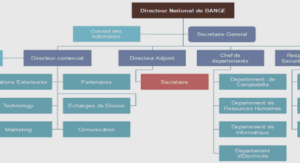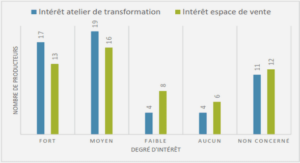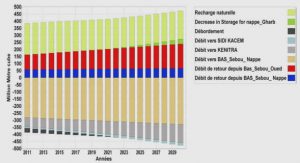A general class of distortion operators for pricing contingent claims with applications to CAT bonds
Background on risk pricing
In this section, we briefly review popular financial and insurance pricing principles.
Arbitrage-free pricing
Let us consider a continuous-time economy where time t takes value within [0, T ]. This economy stochastic behaviour is characterized by a probability space (⌦, FT , P) equipped with a filtration {Ft}t2[0,T ] satisfying the usual conditions.
A central result in the theory of asset pricing by arbitrage, the so-called first fundamental theo-rem of asset pricing, is the equivalence between the absence of (quasi-)arbitrage opportunities and the existence of an equivalent martingale measure Q. See Delbaen and Schachermayer (1994) for the history of this theorem which goes back to the seminal papers of Harrison and Kreps (1979), and Harrison and Pliska (1981). Such a measure is often called a risk-neutral measure because the arbitrage-free price process {St}t2[0,T ] of any traded asset and derivative must satisfy St = Bt EQ Ss Ft , 8t s T, (1.2.1) Bs where {Bt}t2[0,T ] is the risk-free asset price process.
(Re)insurance contracts (Delbaen and Haezendonck, 1989; Sondermann, 1991) and insurance-linked securities (Vaugirard, 2003) employ arbitrage-free pricing techniques initially developed for financial derivatives. Such frameworks are often characterized by an underlying insurance or catastrophe loss process whose dynamics is punctuated by random jumps, e.g., a jump-diffusion process. It is well-known that with such (non-locally bounded) processes, 1 the market is incomplete, and therefore there exists an infinite number of risk-neutral measures. In this case, the choice of risk-neutral measure is determined by the market, i.e., by the equilibrium resulting from supply and demand which are in turn determined by aggregate risk-aversion, liquidity needs, and other factors. In the realm of incomplete markets, popular modelling assumptions are the minimal martingale measure (Föllmer and Schweizer, 1991), the Esscher martingale measure (Gerber and Shiu, 1994), the variance optimal martingale measure (Schweizer, 1995), the mean-correcting martingale measure, and equilibrium-based martingale measures.
Equilibrium-based martingale measures
General equilibrium models can be viewed as a subset of the arbitrage-free pricing framework in the sense that they are possible approaches for selecting the risk-neutral measure. Indeed, there are no arbitrage opportunities in a rational expectation equilibrium.
For example, consider a continuous-time extension of Lucas (1978)’s model. We assume there is a representative agent possessing endowments who maximizes the agents aggregate utility. Let U(t, ct) be the aggregate utility at time t for the consumption process {ct}t2[0,T ]. Under mild conditions, one can show that this setup produces a pricing kernel that depends only on the aggregate endowment process, denoted by { t}t2[0,T ], such that the price process {St}t2[0,T ] of any traded asset and derivative must satisfy the following condition in equilibrium :
St = EP Uc(s, s) Ss Ft , 8t s T, (1.2.2) Uc(t, t)
where P is the physical measure, and Uc ⌘ @@Uc . This equilibrium condition can be written in the form of equation (1.2.1) by noting that the pricing kernel can be used to define a Radon-Nikodym derivative.
Actuarial premium calculation principles
A prominent problem in actuarial science is to derive premium calculation principles (PCPs) that satisfy a number of desirable properties (see, e.g., Laeven and Goovaerts, 2008). We present below two of such popular approaches. 2
Distortion operators
The history of distortion operators goes back to Yaari (1987)’s dual theory of choice under risk, in which attitudes toward risks are characterized by a distortion function rather than by an expected utility function. Distortion operators also stem from the axiomatic approach of Wang et al. (1997) to characterize insurance prices.
Let be a random variable distributed with survival function ¯ ⌘ P under X FP(x) (X > x) the physical measure P. We introduce a distortion operator g which is an increasing and differentiable function such that g(0) = 0, g(1) = 1, and g(u) 2 [0, 1] for all u 2 [0, 1]. It defines a change of measure such that X is distributed with survival function Fg(x) ⌘ g(FP(x)) under the new probability measure.
The price of X is obtained via the expected value under the distorted probability measure.
One can show that this expected value has the following Choquet integral representation : H[X; g] ⌘ Z−1 ⇥ g F¯P(x) 1 ⇤dx + Z 0 1 g F¯P(x) dx,F¯P(x) ⌘ P(X > x).(1.2.3)
This Choquet integral exhibits monotonicity, translation invariance, positive homogeneity, and is sub-additive if g is concave (Denneberg, 1994). Hence, the functional H[•; g] defines a distortion-based risk measure that is coherent in the sense of Artzner et al. (1999) if g is concave. 3 Actuarial weighted pricing principles
Furman and Zitikis (2008) propose a broad class of PCPs based on weighted loss distributions. This class can also be viewed as a subclass of the loss function approach (see Remark 1 of Heilmann (1989)). Under this approach, the price of a risk X 0 is given by EP[w(X)X] (1.2.4)
⇧[X; w] = , EP[w(X)]
where w(x) 0 for all x 0. Thus, the change of probability measure whose Radon-Nikodym derivative is w(x)/EP[w(X)] characterizes this pricing principle. Several popular PCPs are contained within the weighted family. For instance, the Esscher principle is obtained with w(x) = eax and the size-biased premium principle with w(x) = xa, where a 0 in both cases. 4
A general framework for distortion-based risk-neutral valuation
This section contains our main theoretical results. First, we present the general definition of our distortion operator. Then, we characterize the change of probability measure it applies, and the conditions under which it can be used to compute arbitrage-free prices of derivatives.
A new class of distortion operators
We define below our distortion operator by Definition 1.3.1. This general expression can be reduced to a simpler form with fewer parameters using Proposition 1.3.1 whose proof is in Appendix 1.A.1. This can be crucial to circumvent the parameter identification issues that could otherwise arise in calibration.
Definition 1.3.1. Let X be a continuous random variable on (⌦, F, P), and let Q be a probability measure equivalent to P on F. Let ¯ ¯ FP(x) ⌘ P(X > x) and FQ(x) ⌘ Q(X > x). We define the following distortion operator : gQ,P(u) ⌘ F¯ F¯−1 (u) , u 2 [0, 1], (1.3.1) X Q P
Proposition 1.3.1. Let X be a continuous random variable on (⌦, F, P), and let Q be a probability measure equivalent to P on F. For any continuous and increasing function h, ghQ(,XP)(u) = gXQ,P(u), 8u 2 [0, 1]. (1.3.2)
Remark 1.3.1 (Wang transform). Suppose that X is a standard normal N(0, 1) random variable under the measure P, and that it is shifted to a N(✓, 1) distribution under the measure Q. In other words, we have P(X > x) = 1 Φ(x), and Q(X > x) = 1 Φ(x ✓). Let h be any continuous and increasing function. By Proposition 1.3.1, ghQ(,XP)(u) = gXQ,P(u) = Φ Φ−1(u) + ✓ .
Change of measure performed by the distortion operator
The change of probability measure performed by the distortion operator gXQ,P in Definition 1.3.1 is characterized below by Theorem 1.3.1 whose proof is in Appendix 1.A.2. As stated in Corollary 1.3.1 (proven in Appendix 1.A.3), a key feature of the distortion gXQ,P is that it changes the probability measure from P to Q when applied on any random variable of the form h(X), where h is any continuous and increasing function.
Definition 1.3.2. Let Z be a continuous random variable on (⌦, F, P), and let Q be a probability measure equivalent to P on F. Define qP as the probability density function (PDF) of Z under P, and define qQ as its PDF under Q. We define the likelihood ratio Q,P qQ(z) (1.3.3) ⇠Z (z) ⌘ . qP(z)
Theorem 1.3.1. Let X and Z be continuous random variables on (⌦, F, P), and let Q be a probability measure equivalent to P on F. Denote the survival functions of X and Z under P by FP(x) ⌘ P(X > x) and QP(z) ⌘ P(Z > z), and let the PDF of X under P be denoted by fP. The PDF of X under the probability measure distorted by gZQ,P is given by Q,P ¯−1 fgZQ,P (x) = fP(x) ⇠Z QP where ¯−1 is the inverse of ¯ . QP QP ¯ (1.3.4) (FP(x)) ,
Corollary 1.3.1. If X = h(Z), where h is continuous and increasing, then the distorted distribution of X coincides with its distribution under Q : fgZQ,P (x) = fQ(x), for all x in the support.
Connections between the Wang transform and other pricing frameworks
There is a literature studying the connections between the Wang transform, the Esscher-Girsanov change of measure, and the Bühlmann general equilibrium model. We now show that these results can be recovered by virtue of Theorem 1.3.1. We refer to Wang (2003) and Labuschagne and Offwood (2010) for the original proofs. 5
First, let’s see how the Wang transform can be related to the Esscher-Girsanov change of measure. Suppose that Z is a N(0, 1) random variable under P, and that its distribution is shifted to a N(✓, 1) under Q. As stated in Remark 1.3.1, the distortion operator is the Wang transform gZQ,P(u) = Φ Φ−1(u) + ✓ . Moreover, one can readily show that the Radon-Nikodym derivative is ⇠ZQ,P(x) = e✓x−✓2/2. Therefore, applying Theorem 1.3.1 with Q¯P(x) = 1 Φ(x) gives us
f Q,P (x) = e✓Φ 1(FP(x))−✓2/2fP(x), (1.3.5)
where ⌘ ¯ . When , the Definition 3.1 Esscher-Girsanov change of measure FP(x) 1 FP(x) ✓ = h⌫
recovers the one in Labuschagne and Offwood (2010).
Next, let’s see how the Wang transform can yield the Bühlmann (1980)’s pricing equilibrium. The key assumption in Wang (2003) is that X and Z and co-monotone in the sense that under P they can be expressed as X = FP−1(U) and Z = Φ−1(U), where U is uniformly distributed between 0 and 1. Assuming this, using the expression Z = Φ−1(FP(X)) in (1.3.5) yields fgZQ,P (x) = EPh 2 /2 X = xifP(x) = EP e✓Z X = x fP(x). (1.3.6) e✓Z−✓ ⇥EP e✓Z ⇤
Risk-neutral pricing using distortion operators
Let X be a random variable representing a financial or insurance risk. For example, X could be the price of a traded asset (as it is for the case of financial derivatives), but it could also be something else like the number of heating degree days (say a weather derivative) or the value of a catastrophe loss index (as for insurance-linked securities). Our goal is to price derivatives on X using a distortion operator. The proposition below whose proof is in Appendix 1.A.4 gives the general solution to this problem.
Proposition 1.3.2. Let X be a random variable on (⌦, F, P), and let Q be a measure equivalent to P on F. For any continuous and increasing function h, we have Hh Q,P (1.3.7) h(X); gX i = EQ[h(X)].
In particular, Proposition 1.3.2 also holds for any equivalent martingale measure Q, in which case the arbitrage-free price of a derivative with terminal payoff h(X) is given by the discounted value of H h(X); gXQ,P . Less general versions of this result can be found in the literature. For instance, the proof when X is the terminal value of a geometric Brownian motion (see Remark 1.3.2) can be found in Hamada and Sherris (2003). The proof when X is the terminal value of an exponential NIG Lévy motion and Q is the mean-correcting martingale measure is in Godin et al. (2012).
Remark 1.3.2 (Black-Scholes model). It follows from Proposition 1.3.2 that the distortion operator that can recuperate the arbitrage-free prices under the Black-Scholes model is gQ,P, ST where ST is the terminal value of a geometric Brownian motion, with constant drift µ and volatility under the physical measure P, and with drift r and volatility under the risk-neutral measure Q, where r is the risk-free rate. Following Remark 1.3.1, one can check that this distortion reduces to the Wang transform gQ,P(u) = Φ Φ−1(u) + ‘ where ‘ = r−µ pT , with ST T denoting the maturity.
Distortion operators for financial models
Next, we derive distortion operators compatible with arbitrage-free pricing under non-Gaussian extensions of the Black-Scholes model. Empirically, it turns out that such extensions are needed to reproduce well-documented phenomena, such as the “volatility smiles » observed in option markets, and the fact that asset returns exhibit heavier-skewed tails than the normal distribution underpinning the geometric Brownian motion.
We consider a continuous-time market, with time t 2 [0, T ], containing a liquid asset growing at the risk-free rate r and a (possibly non-traded) underlying risky process {St}t2[0,T ] defined on a probability space (⌦, FT , P) equipped with a filtration {Ft}t2[0,T ] satisfying the usual assumptions. In Section 1.4.1, we model the underlying asset with an infinite activity Lévy process, and in Section 1.4.2 with a jump-diffusion process. Both approaches, now standard in the literature, have been widely applied in finance (see, e.g., Schoutens, 2003; Cont and Tankov, 2004).






